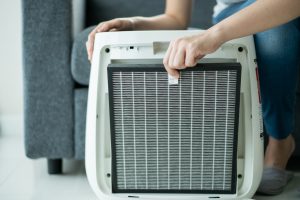Hope and a prayer: Ministry’s back to school plan
Updated August 23, 2021
It’s a bit of déjà vu all over again. Last year at this time School was complaining about an Ontario government back-to-school plan that was too little, too late and not too clear.
For sure, the situation in the province has vastly improved since then with current vaccination rates for two doses running at 73.19 percent for adults and 52.2 percent for kids ages 12 – 17. But with questions about ventilation, mandating vaccination, the Delta variant and a possible 4th wave, the plan released last week has that similar hope-and-a prayer quality to it.
What’s in the plan
Here are some key points. You can read all the details at COVID-19: Health, safety and operational guidance for schools (2021-2022)
-
- Elementary kids will attend school 5 days per week with the usual 300 minutes of instruction per day. They’ll be grouped together in cohorts most of the time with one teacher. But that’s not really going to happen all of the time because the groups will use common spaces like libraries and cafeterias. School assemblies are permitted. Kids can play together outside – distanced and masked. Clearly, no one involved with writing this plan has ever done yard duty supervision.
-
- Quadmesters for secondary students will remain at least for the Fall. That means only 2 courses are offered over a short span of time – so the course material is covered really quickly. This is especially tough for students trying to catch up after being pretty much out of school since March of 2020.
-
 Remote learning is still an option as the Ford government requires school boards to offer 300 minutes a day of online programming. The Ministry of Education will allow boards to use its virtual learning environment run by Brightspace and expects them to be able to switch quickly to online learning should schools have to close. It also calls for “minimum synchronous learning time” in which students can watch other students learning in class while they sit at home – since school boards don’t have enough teachers to run online classes. It’s the only thing worse than online learning itself.
Remote learning is still an option as the Ford government requires school boards to offer 300 minutes a day of online programming. The Ministry of Education will allow boards to use its virtual learning environment run by Brightspace and expects them to be able to switch quickly to online learning should schools have to close. It also calls for “minimum synchronous learning time” in which students can watch other students learning in class while they sit at home – since school boards don’t have enough teachers to run online classes. It’s the only thing worse than online learning itself.
-
- Catching up on learning is something the Ford government says is important along with and “re-engagement of students.” But that’s as far as it goes. Its plan for this consists of free online tutoring.
-
- Mental health again is on the government’s to-do list as long as school boards do it, struggling as they do already, to work with local social services that have had their funds cut and reach out to students and families with fewer staff because they’ve been cut by the same government that advises them to “prioritize comprehensive supports.”
-
- Student supports again are something school boards can provide on their own with the helpful guidance that they “consider changes in the school environment” and connect with underfunded community health partners (see above) to provide services for kids with special needs.
-
- Safety in school directions are more detailed than anything else in this document as the Ministry stipulates masking of all students from grades 1 to 12 while inside, as well as personal protective equipment (PPE) for staff. There are directions for hand washing, for arrival and departure signs, for cleaning procedures and products boards already use. Missing though are plans for contact tracing for people who come to school with COVID-19.
-
- School buses and the like can operate at full capacity though the Ministry helpfully suggests walking and cycling as an alternative. Students above Kindergarten must wear masks and sit in assigned seats. It’s unlikely that the writers of this guidance for schools have spent any time on a school bus.
-
- Ventilation is in a sad state of repair for many schools as maintenance and renewal funds have been cut for decades – as school advocate Fix Our Schools has repeatedly detailed. There is currently a $16 billion backlog in school repairs. Nonetheless, the Ministry wants school boards to inspect their systems, replace filters with the highest quality MERV 13 filters frequently and run them 2 hours before each day before school opens.
 Last week, the Ministry announced an extra $25 million to allow school boards to buy 20 000 HEPA units they can use in classrooms that aren’t connected to a mechanical ventilation system or which house kindergarten kids who won’t be wearing masks inside. This is on top of the over $600 million it says has already been spent on ventilation. While this looks like the Ministry is really stepping up to the school safety plate, $500 million of that, according to CTV news was promised by the Federal government last spring for pandemic-related infrastructure upgrades. The Ford government announced at the time that it would use most of the money to improve ventilation while setting aside some for expanding broadband infrastructure and renovating learning areas to improve physical distancing.
Last week, the Ministry announced an extra $25 million to allow school boards to buy 20 000 HEPA units they can use in classrooms that aren’t connected to a mechanical ventilation system or which house kindergarten kids who won’t be wearing masks inside. This is on top of the over $600 million it says has already been spent on ventilation. While this looks like the Ministry is really stepping up to the school safety plate, $500 million of that, according to CTV news was promised by the Federal government last spring for pandemic-related infrastructure upgrades. The Ford government announced at the time that it would use most of the money to improve ventilation while setting aside some for expanding broadband infrastructure and renovating learning areas to improve physical distancing.
-
- Vaccination says the Ministry is “an important tool to help stop the spread of COVID-19…” With this insight, it encourages school boards to find a way to promote it in their communities. But they won’t be made mandatory, despite the worry of a 4th wave of COVID-19 and the looming dangers of the Delta variant . NDP opposition leader Andrea Horwath found herself facing in the wrong direction when she supported education workers right to refuse vaccine, until members of her party pushed her to change her mind and support mandatory vaccination. This doesn’t change the government’s position and for now, students and education workers will be able to attend school unvaccinated.
What’s missing from the plan
Money
The government announced in May that school boards would have an extra $1.6 billion to help them cover return to school costs. The Ministry would provide about $1.06 billion to cover costs of PPE, extra temporary staff, public health nurses and support for mental health and learning gaps in children. The rest of the money would come from boards dipping into their reserve funds for the second time in two years. This has got to stop. With boards already stretched for money and facing a stand-pat provincial budget for the coming year, they need to maintain their reserve funds.
Timing
The plan is very late arriving. Krista Wylie from Fix Our Schools said, as school boards scramble to make to make changes to their plans, this will only erode their credibility on the eyes of parents “who seem to forget that the province has the lion’s share of responsibility over the rules and all the control over funding.” She added that the $25 million announced for ventilation improvements comes too late to be meaningful for early September. The Ford government doesn’t provide information about school disrepair in general what particular improvements have been made to schools’ ventilation systems. It needs to be open about the state of repairs to parents, education workers and students.
Smaller class sizes
With no children under age 12 vaccinated, it’s just incomprehensible that there is no mention of smaller class sizes. Parents and educators have been fighting the Ford government over this since the spring of 2020. Rather than lower class sizes it simply closed the schools and expected student to learn from home. The fallback position for this government, certainly, is online learning.
Ontario Parent Action Network (OPAN) said in a statement to School, that classes will be “full to the brim” in many cases with 3 and 4 year-olds who can be masked properly adding: “It is not ok to risk the health of our kids. Children with other health conditions are the ones most likely to suffer more severe COVID illness- their health matters! Long Covid symptoms are very real and affect children at a rate of approximately 10-15% of cases and include serious neurological impacts”
Vaccination
This is the elephant in the room. Education unions and the government appeared to be on the same page here by not pushing mandatory vaccinations for staff or students. However, this changed last week when the teachers’ unions called for mandatory “vaccination for school staff, with provisions for exceptions.” They also want lower class sizes and maintaining strict cohorts to reduce contact between kids and staff members, masking of all elementary students, improved ventilation as well as increased testing in schools.
The Ford government is still waffling on the issue of mandatory vaccination, saying that teachers and other public employees will face vaccine mandates – though not mandatory vaccinations. The Ministry of Education is currently working on a “vaccination disclosure policy” for public school board employees as well as staff in private schools and licensed child care settings. What this actually entails, remains to be seen. So, if staff somehow disclose that they have not received the necessary 2 doses of COVID-19 vaccine, they will be subject to frequent rapid testing.
While there some people who claim the right to go unvaccinated, this is no more a human rights and freedoms issue than requirement that students be vaccinated for other infectious diseases like diphtheria, tetanus, polio and measles unless they have a valid exemption. What makes matters all the more difficult is that, without a required vaccination certificate, school staff can’t know who is vaccinated and who isn’t. All of the above concerns would be alleviated immeasurably if everyone who could, had their two COVID-19 shots.

With less than a month to go before kids return to class, in many cases for the first time in 20 months, there is still a long way to go before schools will be ready to welcome them safely.

